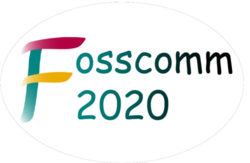One important part of the implementation of the EXT_external_objects and EXT_external_objects_fd groups of extensions for iris (the Intel gallium OpenGL driver) was the semaphore synchronization (EXT_semaphore extension). We’ve seen how the GL semaphores structs and functions that are introduced by this extension should be used in previous interoperability posts. In this post, I’ll try to describe the methods we’ve used to debug the EXT_semaphore implementation itself as well as the fences backend of the iris driver without getting into many driver internals details.
Tag: mesa3d
Building the i965 mesa driver on FreeBSD
Sharing texture data between ANGLE and the native system driver using DMA buffers and EGL on Linux (proof of concept)
This post is about an experiment I’ve performed to investigate if it’s possible to fill a texture from an ANGLE EGL/GLESv2 context (ANGLE is an EGL/GLESv2 implementation on top of other graphics APIs), and use it from a native (for example mesa3D) EGL/OpenGL context on Linux.
EXT_external_objects and EXT_external_objects_fd for the Intel iris driver have been merged into mesa3D! [updated]
This post is a quick status update on OpenGL and Vulkan Interoperability extensions for Linux mesa3D drivers:
Both EXT_external_objects and EXT_external_objects_fd implementations for the Intel iris driver have been finally merged into mesa3D earlier today and will be available in next release! 🎉
Using EGL and the dma_buf kernel framework to associate two textures with the contents of the same buffer without copy taking place
It’s been a few weeks I’ve been experimenting with EGL/GLESv2 as part of my work for WebKit (Browsers) team of Igalia. One thing I wanted to familiarize with was using shared DMA buffers to avoid copying textures in graphics programs.
I’ve been experimenting with the dma_buf API, which is a generic Linux kernel framework for sharing buffers for hardware access across multiple device drivers and subsystems, using EGL and GLESv2.
About VK_EXT_sample_locations
More than a year ago, I had worked on the implementation of VK_EXT_sample_locations extension for anv, the Intel Vulkan driver of mesa3D, as part of my work for Igalia. The implementation had been reviewed (see acknowledgments) at the time, but as the conformance tests that were available back then had to be improved and that was work in progress, the feature was stalled, and I had forgotten about it… Until some weeks ago, when I realized that it has been merged into mesa! 🎉
As this feature is now available to the users, I’ve decided to write a short blog post to explain what this extension is about. You can read the extension’s specification if you are interested in learning how to use it and other details.
FOSSCOMM 2020, and a status update on EXT_external_objects(_fd) extensions [en, gr]
FOSSCOMM (Free and Open Source Software Communities Meeting) is a Greek conference aiming to promote the use of FOSS in Greece and to bring FOSS enthusiasts together. It is organized entirely by volunteers and universities and takes place in a different city each year. This year it was virtual as Greece is under lockdown, and although we’ve missed all the fun of the gathering, there were many interesting talks to watch.
My talk was very similar to the one I’ve given in XDC 2020 about OpenGL and Vulkan Interoperability. It was an update on the EXT_external_objects and EXT_external_objects_fd OpenGL extensions status on various mesa drivers, and Igalia‘s work on them.
Continue reading FOSSCOMM 2020, and a status update on EXT_external_objects(_fd) extensions [en, gr]
A hack to instantly display the Vulkan CTS tests output
Vulkan conformance tests for graphics drivers save their output images inside an XML file called TestResults.qpa. As binary outputs aren’t allowed, these output images (that would be saved as PNG otherwise) are encoded to text using Base64 and the result is printed between <Image></Image> XML tags. This is a problem sometimes, as external tools are required to display them. In this post I’d like to share a few simple hacks I’m using to instantly display the CTS output image when I’m running a CTS test, hoping that they might be handy to more people who work on the drivers.
Continue reading A hack to instantly display the Vulkan CTS tests output
[OpenGL and Vulkan Interoperability on Linux] Part 10: Reusing a Vulkan stencil buffer from OpenGL
This is 10th post on OpenGL and Vulkan interoperability with EXT_external_objects and EXT_external_objects_fd. We’ll see the last use case I’ve written for Piglit to test the extensions implementation on various mesa drivers as part of my work for Igalia. In this test a stencil buffer is allocated and filled with a pattern by Vulkan and then it is used in OpenGL to render something else. We validate that the pattern has been imported correctly and we repeat the process for other depth-stencil formats.
[OpenGL and Vulkan Interoperability on Linux] Part 9: Reusing a Vulkan z buffer from OpenGL
In this 9th post on OpenGL and Vulkan interoperability on Linux with EXT_external_objects and EXT_external_objects_fd we are going to see another extensions use case where a Vulkan depth buffer is used to render a pattern with OpenGL. Like every other example use case described in these posts, it was implemented for Piglit as part of my work for Igalia‘s graphics team to check the extensions implementation of various mesa drivers.
